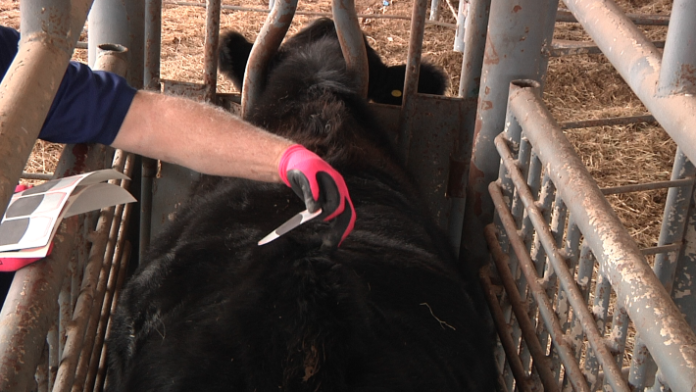
Estrus is one of the most important indicators of whether a cow or heifer will be successfully bred. However, not all estrus cycles are the same for individual females within a herd.
“Some cows will display estrus with less intensity for a shorter duration; they won’t walk around or be ridden as much,” says Ronaldo Cerri, Ph.D., animal reproduction professor at the University of British Columbia in Canada. “A cow in high estrus intensity typically has longer estrus and very intense physical activity that can be monitored.”
Cerri’s research works to improve cattle fertility by identifying which cows and heifers are the best candidates to breed using tactics like artificial insemination (AI) and embryo transfer (ET), with estrus intensity as the deciding factor.
Cattle have typical baseline activity when they aren’t in estrus. When they start to enter estrus, their activity rises as the intensity of the estrus increases. Pinpointing when estrus is about to peak is crucial to a successful pregnancy.
Make breeding decisions obvious
After analyzing extensive data from estrus detection sensors, Cerri and other researchers have pinpointed patterns based on what’s occurring during estrus.
“The patterns are very consistent in many of the studies we do,” says Cerri. “Cows with lower estrus intensity always display less physical activity, but they also have lower pregnancy rates. On the flip side, cows with high estrus intensity display more activity and have higher pregnancy rates.”
Studies across the United States, Canada, Brazil and Germany have all shown this same trend.
Cows exhibiting low estrus intensity tend to have lower concentrations of progesterone during the growth of the ovulatory follicle and fail to ovulate more often than those with high estrus intensity. Similarly, ET recipients that show high estrus intensity have more consistent pregnancy results.
“Estrus intensity serves as a quality marker for a good cycle that leads to a better pregnancy via AI and ET,” says Cerri.
Apply estrus intensity as a guide
Evaluating estrus intensity with the help of heat detection tools can help you pick and choose which cows are the best candidates to breed at a particular time. If you are implementing a mass breeding protocol, you also have the option to use estrus intensity to direct your choices on what type of genetics to use.
“The more targeted you want to be in your breeding program, the more you can use estrus intensity information to make a breeding decision,” says Cerri. “You can identify high estrus intensity cows to receive sexed semen or embryo transfer because they are more likely to get pregnant. Then you can use conventional semen for the low estrus intensity females.”
“You can monitor estrus intensity by watching movement and mounting activity, but it really isn’t practical,” adds Cerri. “That’s why we need to utilize tools to helps us identify these events.”
A variety of tools are available to monitor estrus, such as activity monitors, tail paint or chalk and breeding indicator patches. Some offer more information than others and come with tradeoffs.
“Activity monitors are quite effective at measuring estrus intensity, but not everyone can utilize them,” says Cerri. “Breeding indicator patches are another option that can give you a subjective measure and score estrus intensity, which is probably better than other inexpensive options like tail chalk.”
With breeding indicator patches, you can monitor estrus by looking for patches that have 50% or more of the surface ink rubbed off as being in high estrus intensity and are ready to breed. Females with less than 50% of the surface ink rubbed off are in low estrus intensity and could be bred with lower-cost genetics or bred later when they’ve reached high estrus intensity.
“Estrus and the intensity of estrus within those cows are important pieces of information to add to your reproduction program,” says Cerri. “Once you have this information, you’ll have better predictions of what your cows will do, making you more efficient and profitable.”
For more information on determining estrus intensity with breeding indicators, visit ESTROTECT.com.
The ESTROTECT Breeding Indicator is the industry standard for optimizing cattle breeding efficiency and economics. With millions and millions of units sold around the world, ESTROTECT is the only breeding management tool tested in a multitude of university studies by researchers.







